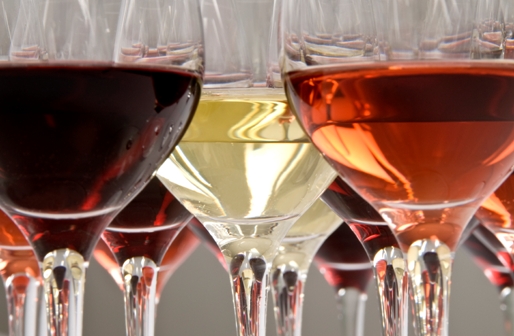Essentials of Teaching Wine-Tasting
01 June 2009By Edward Korry, CWE, CSS, Johnson & Wales University
Wine-tasting not only educates students or young professionals about wine, but also serves as a method to develop their sensory-evaluative abilities and hone precision in thinking and descriptive vocabulary. Wine is a valuable tool for revealing differences in their abilities and taste perceptions from others. They learn whether they are super-sensitive, sweet, tolerant or hyper-tolerant tasters, which will be of critical value in their careers.
The advantage of using wine as a learning tool is that, unlike food, it can concentrate the mind on fewer tastes: sweetness, acidity and sometimes bitterness without the additional complex elements of salt or fat. The subtle differences between one wine and another helps to focus on narrow differences and thereby develops one into a more astute taster. It is essential to have comparative tastings so that students experience the differences between samples.
Elements of Teaching
What are the elements to teaching how to taste wine? We teach the six “S”s of wine tasting: See, Swirl, Sniff, Sip, Swallow or Spit and Savor. While sight in many ways is the least accurate of our senses (don’t judge a book by its cover), it can provide useful clues and anticipation of what is to come.
The depth of color can reveal clues about the variety, the climate or provenance of the wine, its maturity or how it was aged. For example, a very nearly colorless wine could be deduced to be from a cool climate and not be barrel-aged. Furthermore, with enough knowledge one could conclude that the wine is most likely a Chenin Blanc, Muscadet, Soave or very young Chablis. A purple wine can be viewed as being a very young wine, and the bluer the shade the higher the level of acidity. Wines with brick-colored rims can be said to be older wines. Wines with a significant meniscus or watery outer rim can be noted as having higher alcohol and therefore from a warmer climate. And so on and so forth. One could write a whole chapter merely on color and depth of intensity variations and potential deductions. But, it is essential to have students really examine the wine, note differences, be precise and use a logical deductive methodology that can be applied to all sensory evaluations whether wine, other beverages or food.

The next “S” is swirl. We may teach students to first nose the wine without swirling to assess if the wine has any off odors, but swirling is key to aerating the volatile aromas that give the wines their smells. It also allows one to observe the residual stripes on the inside of the glass, called legs or tears, which is caused by the alcohol and glycerin in the wine evaporating at a faster rate than the water molecules in wine. The higher the alcohol, the more pronounced the legs. The first smell one should concentrate the mind on is whether the wine is clean or has faults.
Sniffing or smelling the wines is in many ways the most important element of sensory evaluation. Wines have more than 300 detectable aromas, which we either find pleasant, intriguing or unpleasant. The manner in which one smells is important: too many sniffs, and one becomes adapted and unable to distinguish differences. It’s helpful to students to differentiate between primary fruit aromas and secondary bouquets, which are fermentation- and maturation-derived. (Think oak and bottle aged.) Limit students to three sniffs, with time intervals so their palates don’t become adapted. Segregate out different categories of smells so that it makes it easier for them to associate certain smells with certain categories, i.e., tree fruit, berries, tropical fruit, etc. Do not tell them what they smell, as each of us has different thresholds and sensitivity to different smells.
When sipping, the key is to taste without breathing so that one can focus on the taste sensations on the tongue and palate. Students have the most difficult time associating ripe fruit flavors with lack of sugar because it’s counter-intuitive. Ripeness equals sweetness, doesn’t it? (Not when the sugar is converted into alcohol). Tell the students to hold the wine in their mouths, swishing it around for at least five to 10 seconds, if not longer, before asking them to whistle backwards. They should be able to detect the levels of sweetness and acidity. It may take a while to develop a scale appropriate for each student, but eventually all will be on board. Let them know that acidity results in saliva and that tannins result in “desert mouth” so that they are more easily understood.
Once they have whistled backwards they are reaffirming or discovering new flavors/smells through their retronasal passageways. Have them write down their first impressions and then, once they have spit out the wine, whether they discover new flavors. Then, have them savor the resulting mouthfeel, tastes and flavors by focusing their minds on the intensity of all. Are they balanced and harmonious and do they last very long? Is the acidity overwhelming or is it balanced by sweetness or by alcohol? If tannic, is it balanced by alcohol and fruit intensity? Is there any bitterness on the finish? Is it slight and therefore lends an interesting component to the wine or a distraction and overwhelming to the overall impression? How long do the flavors last on the palate? The length and intensity as well as balance of acid to fruit and alcohol are all elements they need to understand as reflections of quality.
It all seems overwhelming to students and young professionals at first, but with an organized systematic framework provided for them, they quickly learn to discern the differences, especially if the tasting exercises contrast wines to each other. Offer a dry, light, white, acidic, unoaked wine such as a Chenin Blanc against a full-bodied, oaked white such as a Californian Chardonnay; or a light, dry, low-tannic red such as a Pinot Noir against a full-bodied, high-tannic red such as a Cabernet Sauvignon. They will soon clearly note not only the differences, but gain an appreciation of what they like and why. That will educate them as to what type of taster they are, and they will thank you for giving them such knowledge and self awareness, which will be applicable during their careers.

Edward Korry, CWE, CSS, is an associate professor and chair of the Beverage & Dining Service Department in the College of Culinary Arts at Johnson & Wales University in Providence, R.I. A Certified Wine Educator, a Certified Specialist of Spirits, a registered tutor of the Wine & Spirits Education Trust, a Formador Homologado del Vino de Jérèz (Certified Sherry Wine Educator) and a certified Bordeaux Wine Educator, Korry is a member of the board of directors for the Society of Wine Educators and board member of the U.S. Bartenders Guild. He teaches and has developed classes that specialize in wine, beer and spirits; mixology, coffee and tea; and restaurant management. He championed the development and implementation of beverage concentrations at Johnson & Wales University.
